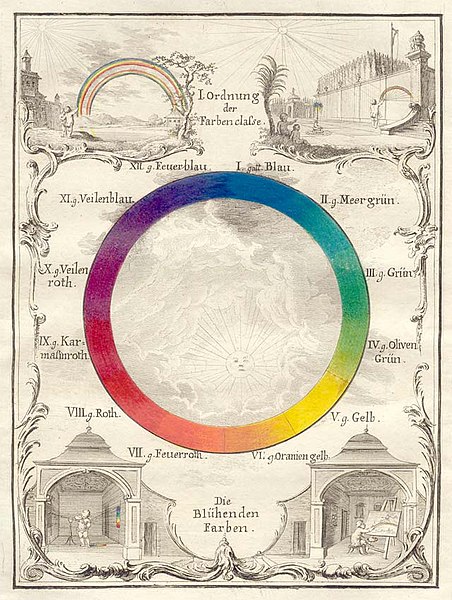Color symbolism in art, literature, and anthropology refers to the use of color as a symbol in various cultures and in storytelling. There is great diversity in the use of colors and their associations between cultures and even within the same culture in different time periods. The same color may have very different associations within the same culture at any time. Diversity in color symbolism occurs because color meanings and symbolism occur on an individual, cultural and universal basis. Color symbolism is also context-dependent and influenced by changes over time. Symbolic representations of religious concepts or articles may include a specific color with which the concept or object is associated.
A flock of black and white sheep grazing in the Italian countryside
A Catholic archbishop and cardinal in choir dress. Bishops traditionally wear purple, cardinals red.
A group of young Buddhist monks in Cambodia. Orange, symbolizing enlightenment, is an important color in Buddhism.
Color theory, or more specifically traditional color theory, is the historical body of knowledge describing the behavior of colors, namely in color mixing, color contrast effects, color harmony, color schemes and color symbolism. Modern color theory is generally referred to as Color science. While there is no clear distinction in scope, traditional color theory tends to be more subjective and have artistic applications, while color science tends to be more objective and have functional applications, such as in chemistry, astronomy or color reproduction. Color theory dates back at least as far as Aristotle's treatise On Colors. A formalization of "color theory" began in the 18th century, initially within a partisan controversy over Isaac Newton's theory of color and the nature of primary colors. By the end of the 19th century, a schism had formed between traditional color theory and color science.
Goethe's color wheel from his 1810 Theory of Colours
Page from 1826 A New Practical Treatise on the Three Primitive Colours Assumed as a Perfect System of Rudimentary Information by Charles Hayter
Georg Christoph Lichtenberg. Göttingen, 1775, plate III.
Ignaz Schiffermüller, Versuch eines Farbensystems (Vienna, 1772), plate I.







